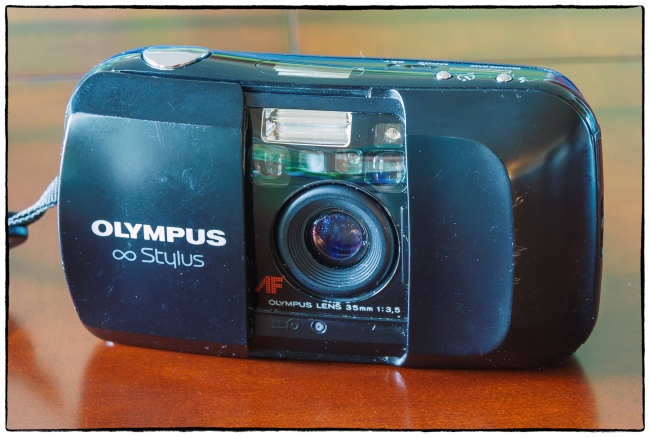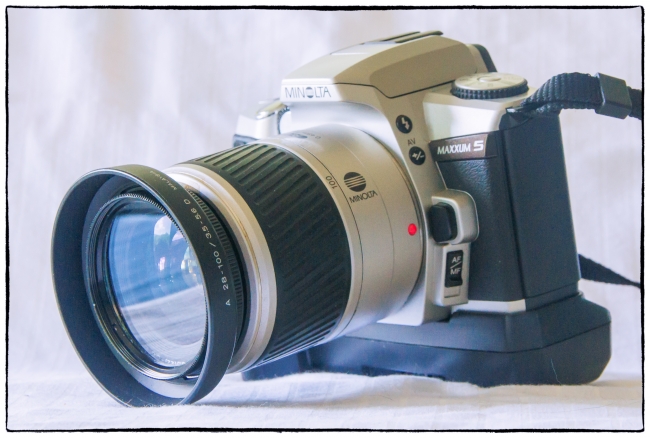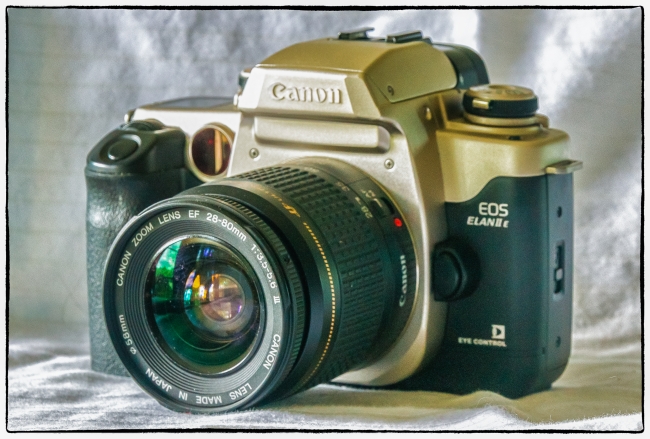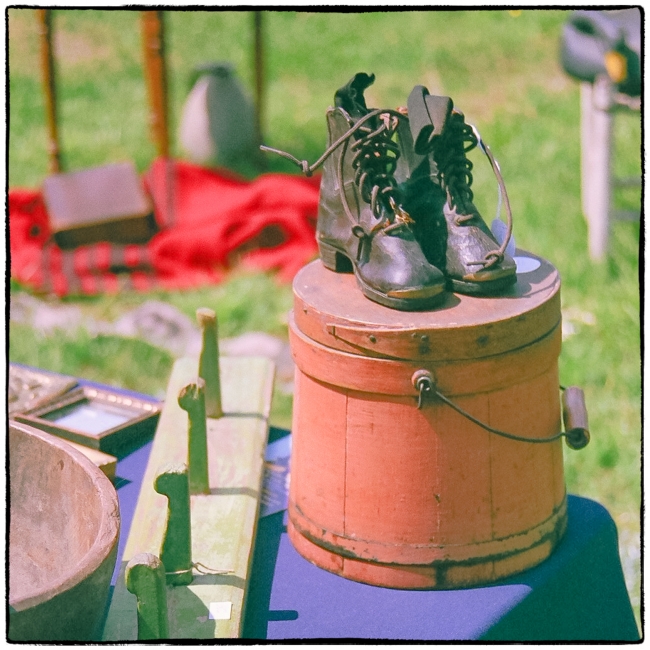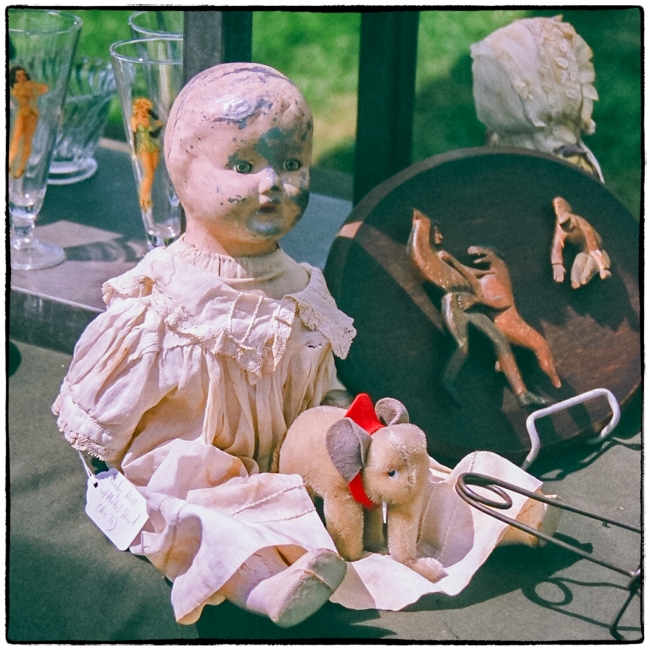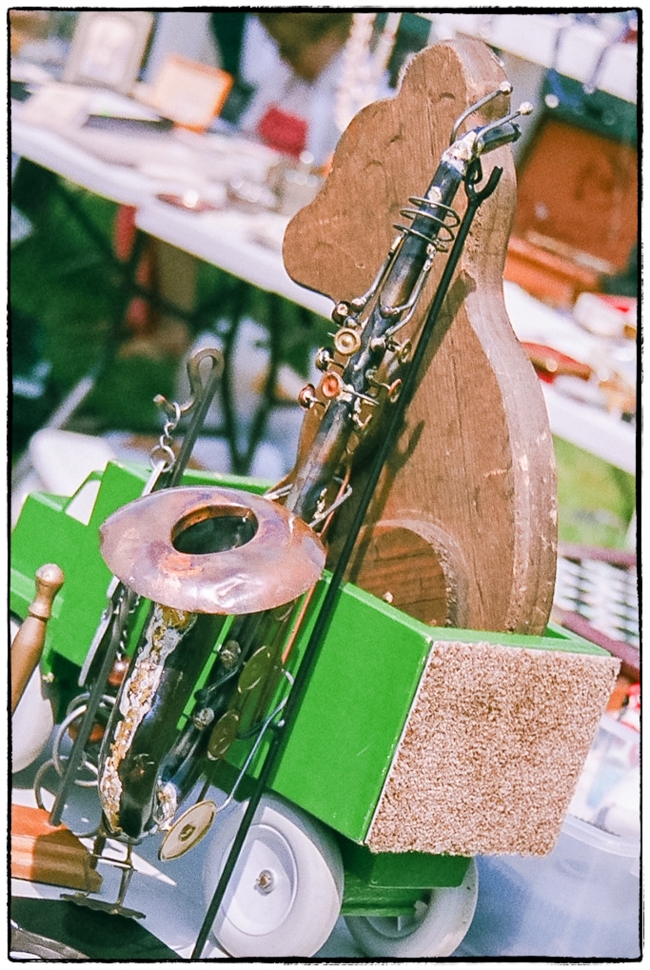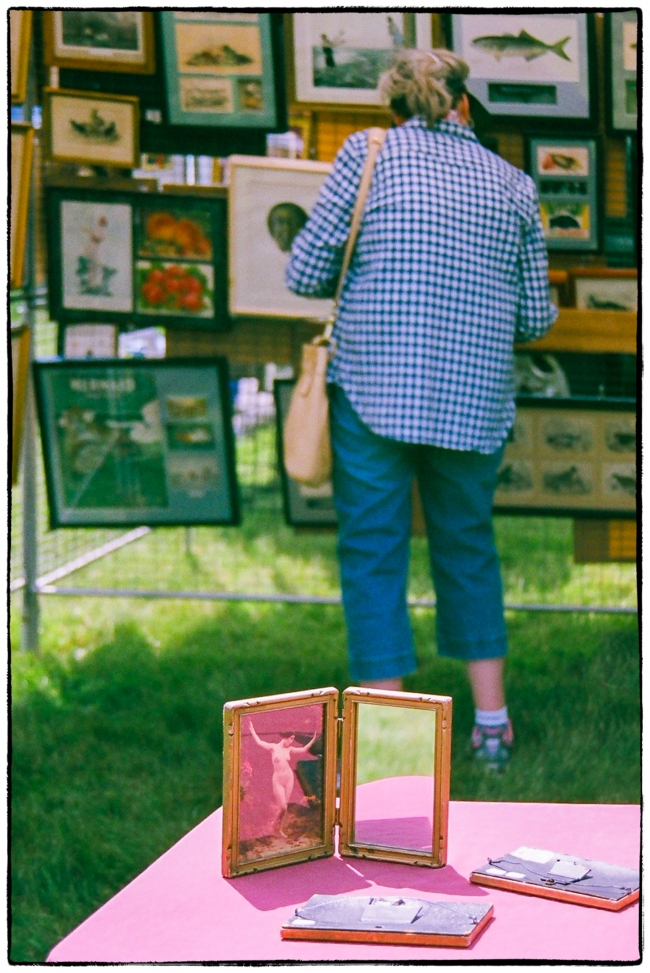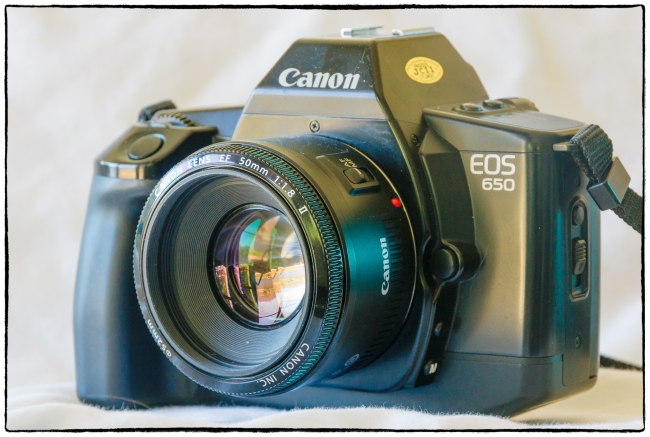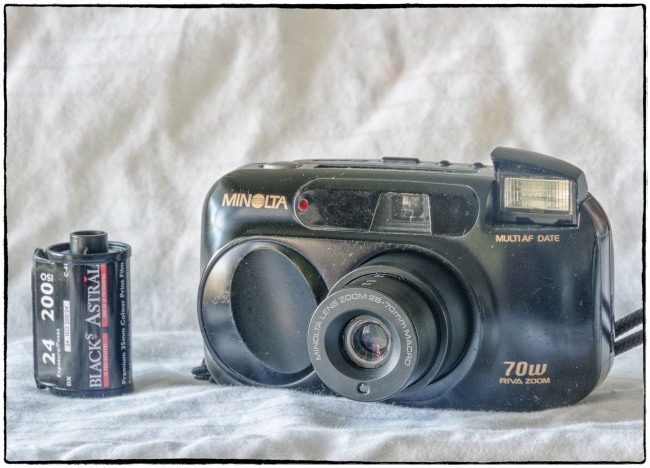This is the original Olympus Infinity Stylus (known outside the US as ‘Mju’), not the rather more famous (and more expensive) Infinity Stylus Epic (see Back to film: Olympus Stylus Epic and Finally found something at the thrift store. It’s known outside the US as ‘Mjuii’). I have two of them: one I bought myself (it was really inexpensive) and the other was given to me by a friend.
There’s not much to say about this camera (and in any case it’s all been said already in the many reviews on the Internet) so I’ll just provide a short summary of my impressions.
Visually it’s an attractive camera, all curves and shiny black bakelite. Yet it feels solid, like something that won’t break all that easily. It has the signature – also found on the Stylus Epic, the XA (see: Olympus XA) and many other compact Olympus cameras) Olympus sliding door. When opened it turns on the camera. The Infinity Stylus is quite small and fits easily into a trouser pocket. In terms of features it’s quite spartan having only three main buttons on the top plate: one to control the various flash options (I don’t like small on camera flash and so don’t use it), one to control the self timer, and the other the shutter button. Mine is the quartz date version so it also has a small window for you to see how the date options are configured and two really tiny (you have to set them with a pointed object such as a pen) buttons for changing and setting the date options. I don’t like date backs so the first thing I did was to turn this off. There’s also a small LCD on top which tells you the status of the battery; how the flash is set; and which frame you’re on. Film loading is easy: just slide the catch on the left side of the camera up to open the back; put the film cartridge on the left side; extend the leader to the appropriate point and close the back. There’s a fairly loud ‘whirring’ sound, which eventually stops and you see the number ‘1’ appear in the LCD. The ISO (ISO 50-3200) is set automatically using DX codes and there’s a small window in the back where you can see what film is in the camera.
The lens is a 35mm f3.5 and is reputed to be quite good. Reading around I’ve discovered that it focuses down to 1.1 feet. Focus and exposure are locked together with a single half press of the shutter. When the shutter button is fully pressed the picture is taken and the camera automatically advances to the next frame. Shutter speeds range from 1/15 to 1/500 of a second, but neither shutter speed nor aperture are displayed anywhere. All you get is a green light to show that focus has been locked and an orange light to indicate that a flash is required.
A few quibbles. As been said in all of the many reviews, the most annoying feature is that when you turn on the camera the flash is set to ‘automatic’. As mentioned above I don’t like on camera flash, so I have to remember to turn the flash off every time I turn on the camera on. It’s not hard to do – just two presses of a small button – but you have to remember to do it. I also found the viewfinder to be a bit ‘touchy’. If you don’t get your eye in just the right place it tends to black out (either partially or completely) and you have to move your eye around to see through it again. Another consequence of this is that I found it hard to see the two (green and orange) lights. I knew there was a green light when focus was acquired, but I just couldn’t see it until started to move my eye around to find it. I imagine that focus was locked even if I couldn’t see the light, but more worrisome was that since I’d turned the flash off the ‘need flash’ light never came on. I imagine it’s possible that I’ll end up with a blurry pictures because the camera selected a slow shutter speed.
Still, as the saying goes, the proof of the pudding is in the eating, and we’ll see more when I get the results back.
I have to apologize for the poor quality of the picture. I usually take more time – arranging the background, putting the camera on a tripod, focusing manually etc. However, I was in a bit of a rush and since I’d recently acquired a camera with better high ISO performance (more on that later) I thought I’d try just hand holding it. Well, while the camera’s performance is certainly better, mine isn’t. I still can’t hand hold slower shutter speeds and consequently the image is not as sharp as I would like it to be. Update: I redid the picture – this time with the camera on a tripod.

